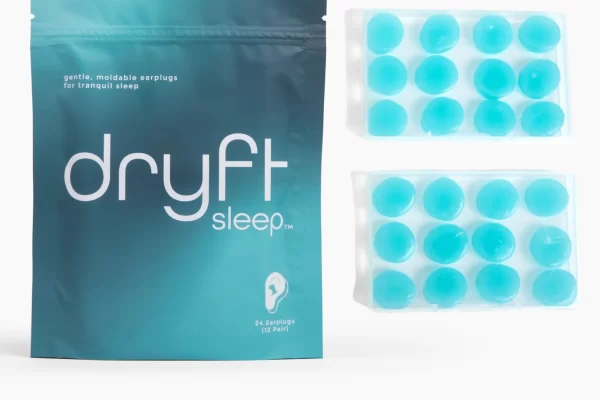Table of Contents
ToggleIntroduction:
In the quest for better sleep and overall health, we often overlook one simple yet crucial aspect: our breathing. More specifically, the way we breathe while we sleep.
Enter mouth taping, a practice that encourages nasal breathing during sleep. While it may sound unusual, the benefits of mouth tape are surprisingly extensive.
From improved sleep quality to enhanced dental health, mouth taping can be a game-changer. But what exactly is mouth taping?
In essence, it involves placing a special tape over the mouth before sleep. This encourages nasal breathing, which is the body’s preferred method of respiration.
Nasal breathing filters and warms the air, reducing the risk of respiratory infections. Moreover, it leads to improved oxygen saturation in the blood, promoting better overall health.
In this comprehensive guide, we delve into the surprising benefits of mouth tape. We’ll explore how it can improve your sleep, boost your health, and even enhance your cognitive function.
Whether you’re a health enthusiast, a sleep-deprived individual, or simply curious, this guide will provide valuable insights. So, let’s embark on this journey to discover the surprising benefits of mouth tape.
Understanding Mouth Taping: An Overview
Benefits of Mouth Tape!
Mouth taping is a practice that has been gaining attention in recent years. Despite its seemingly odd nature, it is rooted in a fundamental understanding of our body’s physiology.
Before we delve into the benefits of mouth tape, let’s first understand what it is and the science behind it.
What is Mouth Taping?
Mouth taping, as the name suggests, involves taping the mouth shut. This is typically done before sleep, using a special kind of tape that is safe and comfortable.
The purpose of mouth taping is to encourage nasal breathing. By keeping the mouth closed, we are nudging our bodies to breathe through the nose, which is the more beneficial route for air to enter our bodies.
The Science Behind Mouth Taping
Benefits of Mouth Tape!
The science behind mouth taping is rooted in the understanding of our respiratory system. Our bodies are designed to breathe through the nose. Nasal breathing has several advantages over mouth breathing.
These include better filtration of air, warming and humidifying the air before it reaches our lungs, and promoting the production of nitric oxide, a molecule that plays a crucial role in our body’s health and functioning.
Mouth taping, therefore, is a simple yet effective way to promote nasal breathing, particularly during sleep when we may unconsciously revert to mouth breathing.
By understanding the science behind mouth taping, we can better appreciate its potential benefits and applications. In the following sections, we will explore these benefits in more detail.
The Role of Nasal Breathing in Overall Health
Benefits of Mouth Tape!
Nasal breathing plays a crucial role in our overall health. It is the body’s preferred method of respiration and offers several advantages over mouth breathing.
Understanding the importance of nasal breathing and the potential drawbacks of mouth breathing can help us appreciate the benefits of practices like mouth taping.
Why Nasal Breathing Matters?
Nasal breathing is more than just a way to get air into our lungs. It is a complex process that involves filtering, warming, and humidifying the air we breathe.
This process helps to protect our respiratory system and ensures that the air reaching our lungs is clean and at the right temperature and humidity. Nasal breathing also promotes the production of nitric oxide, a molecule that plays a crucial role in various bodily functions.
These include regulating blood pressure, boosting the immune system, and improving brain function.
The Downside of Mouth Breathing
On the other hand, mouth breathing bypasses many of the benefits offered by nasal breathing. When we breathe through our mouth, the air we inhale is not properly filtered, warmed, or humidified.
This can increase the risk of respiratory infections and other health issues. Mouth breathing can also lead to dry mouth, which can disrupt the oral microbiome and increase the risk of dental health problems.
Moreover, mouth breathing does not promote the production of nitric oxide, missing out on its numerous health benefits.
Understanding these differences between nasal and mouth breathing underscores the potential benefits of mouth taping, a practice designed to promote nasal breathing, particularly during sleep.
Top 5 Benefits of Mouth Tape
Benefits of Mouth Tape!
Mouth taping offers a plethora of benefits, many of which are linked to the promotion of nasal breathing. Here, we delve into the top 50 benefits of mouth tape, exploring how this simple practice can enhance various aspects of your health and well-being.
Improved Sleep Quality and REM Sleep
One of the most significant benefits of mouth tape is improved sleep quality. By promoting nasal breathing, mouth taping can help reduce snoring and symptoms of sleep apnea.
This can lead to fewer interruptions during sleep, allowing for more restful and restorative sleep. Moreover, mouth taping can increase the amount of REM sleep, a stage of sleep associated with memory consolidation and learning.
Enhanced Dental Health and Oral Microbiome
Mouth taping can also contribute to better dental health. By preventing dry mouth, it helps maintain a healthy oral microbiome, reducing the risk of cavities and gum disease.
Mouth taping can also help align the jaw and reduce tension in the facial muscles, potentially preventing temporomandibular joint (TMJ) disorders.
Furthermore, by promoting nasal breathing, mouth taping can help maintain a proper pH balance in the mouth, which is beneficial for oral health.
Better Breathing and Reduced Snoring
Mouth taping encourages nasal breathing, which is more efficient and healthier than mouth breathing. Nasal breathing filters and warms the air, reducing the risk of respiratory infections.
It also promotes diaphragmatic breathing, leading to better relaxation and stress management. Moreover, by keeping the mouth closed during sleep, mouth taping can significantly reduce snoring, providing relief for both the snorer and their bed partner.
Potential Cognitive and Mental Health Improvements
Mouth taping can potentially lead to cognitive and mental health improvements. By improving sleep quality, it can enhance cognitive function, memory, and concentration.
Better sleep can also boost mood and reduce the risk of mental health disorders like depression and anxiety. Moreover, by promoting nasal breathing and increasing oxygen saturation in the blood, mouth taping can potentially improve brain health and function.
Long-Term Health Benefits
Benefits of Mouth Tape!
The benefits of mouth taping extend beyond immediate improvements in sleep and breathing. Consistent use of mouth tape can lead to long-term improvements in breathing patterns, potentially reducing the risk of respiratory diseases.
It can also contribute to better posture by promoting proper breathing mechanics. Moreover, by improving sleep and reducing stress, mouth taping can potentially reduce the risk of chronic diseases like heart disease and diabetes.
Finally, mouth taping can be a simple and cost-effective way to improve overall health and wellness, making it a worthwhile addition to your health routine.
How to Use Mouth Tape for Sleep
Mouth taping can be a simple yet effective addition to your sleep routine. However, it’s important to do it correctly to reap the benefits and avoid potential risks.
Here, we provide a comprehensive guide on how to use mouth tape for sleep, including choosing the right tape and the correct method of application.
Choosing the Right Mouth Tape
Benefits of Mouth Tape!
The first step in mouth taping is choosing the right tape. Not all tapes are created equal, and using the wrong type can lead to skin irritation or other issues. Here are some factors to consider when choosing mouth tape:
- Hypoallergenic: The tape should be hypoallergenic to prevent allergic reactions.
- Comfort: The tape should be comfortable to wear and not cause any discomfort or pain.
- Easy to remove: The tape should be easy to remove in the morning without causing any pain or leaving any residue.
- Breathable: Some tapes have small vents or holes to allow for some mouth breathing if necessary.
- Size: The tape should be the right size to cover your mouth without covering your nostrils.
Step-by-Step Guide to Mouth Taping
Once you’ve chosen the right tape, the next step is to apply it correctly.
Here’s a step-by-step guide on how to use mouth tape for sleep:
- Cleanse and dry your face: Before applying the tape, make sure your face is clean and dry. Any oil or moisture can prevent the tape from sticking properly.
- Cut a piece of tape: Cut a piece of tape that’s long enough to cover your mouth from one corner to the other.
- Apply the tape: Starting from one corner of your mouth, gently apply the tape, making sure it covers your lips completely.
- Press down gently: Once the tape is in place, press down gently to ensure it sticks properly.
- Check for comfort: Before going to sleep, check to make sure the tape is comfortable and not causing any discomfort.
Remember, mouth taping should not cause any pain or discomfort. If it does, remove the tape and consult with a healthcare provider.
Addressing Common Concerns and Safety Measures
Benefits of Mouth Tape!
While mouth taping can offer numerous benefits, it’s important to address common concerns and safety measures. This practice is generally safe for most people, but it’s not suitable for everyone.
Understanding potential risks and how to avoid them can help ensure a safe and beneficial mouth taping experience.
Is Mouth Taping Safe for Everyone?
Mouth taping is generally safe for most adults and children. However, it’s not recommended for everyone. People with certain conditions, such as severe nasal congestion, certain sleep disorders, or respiratory issues, should not use mouth tape.
Always consult with a healthcare provider before starting mouth taping, especially if you have any health concerns.
How to Avoid Potential Risks?
Benefits of Mouth Tape!
While mouth taping is generally safe, there are potential risks to be aware of. These include skin irritation, discomfort, and in rare cases, choking or suffocation.
To avoid these risks, always use hypoallergenic tape designed for mouth taping. Also, ensure the tape is applied correctly and comfortably, and never use mouth tape if you’re feeling unwell or have difficulty breathing through your nose.
Mouth Taping: From Athletes to Sleep Apnea Patients
Benefits of Mouth Tape!
Mouth taping is not just for those looking to improve their sleep. It’s also gaining popularity among athletes and individuals with sleep disorders like sleep apnea and snoring.
Let’s explore how these diverse groups can benefit from mouth taping.
Mouth Taping in Sports Performance
Athletes are always looking for ways to enhance their performance and recovery. Mouth taping can be a simple yet effective tool in their arsenal.
By promoting nasal breathing, mouth taping can improve oxygen saturation in the blood. This can lead to better endurance and reduced muscle fatigue.
Moreover, better sleep quality through mouth taping can aid in faster recovery post-training.
Mouth Taping for Sleep Apnea and Snoring
For individuals suffering from sleep apnea or snoring, mouth taping can be a game-changer. By encouraging nasal breathing, it can reduce the severity of these conditions.
Mouth taping can also improve sleep quality, leading to less daytime fatigue and better overall health. However, it’s important to note that mouth taping is not a cure for sleep apnea.
It should be used as a complementary measure, under the guidance of a healthcare provider.
Integrating Mouth Taping into Your Sleep Hygiene Routine
Benefits of Mouth Tape!
Mouth taping can be a valuable addition to your sleep hygiene routine. It’s a simple practice that can yield significant benefits.
But how can you integrate it into your nightly routine? Let’s explore some strategies.
Creating a Pre-Sleep Ritual with Mouth Tape
Creating a pre-sleep ritual can signal your body that it’s time to wind down. Mouth taping can be a part of this ritual. Before you go to bed, clean and dry your lips.
Then, apply the mouth tape gently. This simple act can prepare your body for a night of restful, nasal breathing.
It can also serve as a reminder to relax and let go of the day’s stresses.
Combining Mouth Taping with Other Sleep Practices
Benefits of Mouth Tape!
Mouth taping can be combined with other sleep practices for enhanced benefits. For instance, you can pair it with a consistent sleep schedule.
Going to bed and waking up at the same time each day can regulate your body’s internal clock. Adding mouth taping to this routine can further improve your sleep quality.
You can also combine mouth taping with other relaxation techniques. Practices like reading, meditation, or deep breathing exercises can help you unwind.
When paired with mouth taping, these practices can set the stage for a night of deep, restorative sleep.
Expert Opinions and Medical Insights on Mouth Taping
Mouth taping is gaining recognition in the medical community. Healthcare professionals and researchers are exploring its potential benefits. Let’s delve into what the experts have to say.
What Healthcare Professionals Say
Benefits of Mouth Tape!
Many healthcare professionals endorse mouth taping. They see it as a simple, non-invasive method to promote nasal breathing. Dentists, in particular, appreciate its potential for oral health.
Mouth taping can prevent dry mouth, a common cause of dental decay. It can also help manage conditions like sleep apnea and snoring. Sleep specialists also recognize the benefits of mouth taping.
It can improve sleep quality and increase REM sleep. This can lead to better cognitive function and overall health. However, professionals advise caution for certain individuals.
Those with nasal obstructions or certain health conditions should consult a healthcare provider before starting mouth taping.
Research and Studies Supporting Mouth Taping
Several studies support the benefits of mouth taping. Research shows that nasal breathing can improve oxygen saturation in the blood. This can enhance athletic performance and cognitive function.
Studies also link nasal breathing to better sleep quality. Mouth taping can promote this beneficial breathing pattern. Research on mouth taping and sleep apnea is particularly promising.
Some studies suggest it can reduce symptoms and improve sleep quality for those with mild sleep apnea. However, more research is needed to fully understand the potential of mouth taping.
Current studies are limited and often focus on specific populations. Despite this, the existing research provides a strong foundation for the benefits of mouth taping.
Can Mouth Taping Cause Suffocation?
The fear of suffocation is common among first-time mouth tapers.
However, it’s important to note that most mouth tapes are designed to allow some degree of mouth breathing if necessary.
This means that if you’re unable to breathe through your nose, you can still get air through the tape.
Always consult with a healthcare provider before starting mouth taping, especially if you have a chronic nasal obstruction or other respiratory issues.

Dryft Sleep Mouth Tape
Dryft Sleep Earplugs
- Noise-canceling ear plugs for a better night’s rest
- Reduces sound and disruption for sleep, study, work or travel
- Comfortable silicone molds to the shape of your ear
- Medical-grade, latex-free, and made of safe silicone that’s reusable
- 12 pairs (24 individual ear plugs) per package

How to Remove Mouth Tape Safely?
Benefits of Mouth Tape!
Removing mouth tape is usually straightforward. It’s best to do so slowly and gently to avoid irritating the skin.
If the tape feels too sticky, you can dampen it with warm water before removal. Remember, the tape should come off easily without causing discomfort.
If it doesn’t, consider switching to a different brand or type of tape.
Are There Alternatives to Mouth Taping?
Yes, there are alternatives to mouth taping. For instance, chin straps can help keep the mouth closed during sleep.
Oral devices, like mandibular advancement devices, can also promote nasal breathing. However, these alternatives may not provide the same benefits as mouth taping.
Always consult with a healthcare provider to determine the best option for you.
Conclusion: Embracing the Benefits of Mouth Taping
Benefits of Mouth Tape!
Mouth taping is more than just a sleep aid. It’s a simple, cost-effective tool that can significantly improve your overall health.
From enhancing sleep quality to promoting better breathing, the benefits of mouth taping are extensive. It’s a practice that encourages the body’s natural and optimal way of breathing—through the nose.
Mouth taping can be particularly beneficial for those struggling with sleep-related issues like snoring and sleep apnea. But its advantages extend beyond sleep.
Improved dental health, potential cognitive enhancements, and long-term health benefits are just a few of the positive outcomes associated with mouth taping.
As with any health practice, it’s important to approach mouth taping with care. Ensure you’re using the right type of tape, applying it correctly, and addressing any potential concerns with a healthcare provider.
With the right approach, mouth taping can be a valuable addition to your health and wellness routine. Embrace the benefits of mouth taping and discover the difference it can make in your life.
Affiliate Disclosure:
The links contained in this product review may result in a small commission. This goes towards supporting our research and editorial team and please know we only recommend high-quality products.
Note: This article is for informational purposes only and is not intended to diagnose, treat, or cure any disease. Always consult a healthcare professional before taking any supplement or making any changes to your diet or lifestyle.




